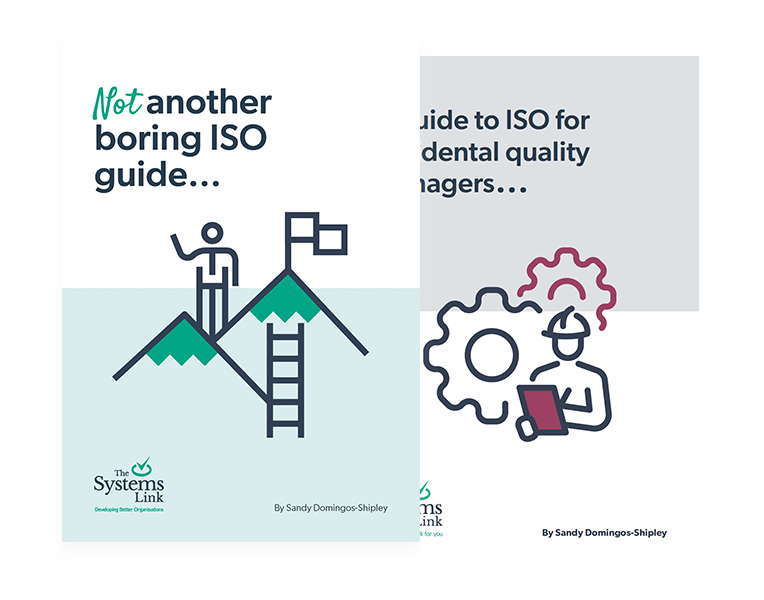There’s always room for improvement, no matter how small. Continually reviewing and refining your systems and processes will help you spot opportunities for improvement as well as potential risks and threats.
In the final part of this seven-part series, we’re looking closely at continuous improvement. If you’ve got effective management systems in place, you can use them to grow your business and become world-class.
1. Improve organisational capability
In this series, we’ve looked at how to build a customer-focused business with good leadership, engaged employees and efficient processes. We’ve looked at the importance of documenting data and then evaluating that data to make business decisions.
When a business has effective business management systems in place, it is much easier to improve organisational capability. You can remove the guesswork and use your business management system to inform your strategy instead. What steps are needed to support the growth or change you want to achieve?
2. Use root cause analysis to determine actions
When we get sick, it’s very easy to treat the symptoms rather than look for the cause. We have a headache, so we take paracetamol, but what is causing the headache – stress, diet, dehydration, lack of sleep, caffeine withdrawal?
It’s the same in business. When a problem occurs, it’s easy to solve it by putting a bandage on it, treating the symptoms without finding the cause.
Avoid jumping to conclusions and making ill-informed decisions about how to resolve an issue; conduct a root cause analysis instead. Identify as many causes as possible until you find the underlying issues.
For example, poor sales results might be caused by any combination of the following:
- Lack of training or product knowledge
- Lack of motivation and engagement
- Poor management
- Incorrect pricing
- Ineffective marketing
- Complex ordering process
- Lack of customer demand
- Not following up on enquiries soon enough
- Low-quality product
Until you understand the cause, you won’t be able to resolve the problem. There would be little point investing in additional training for your sales team if the problem was actually with your marketing.
3. Anticipate risk and opportunity
You can’t pre-empt every problem, and there will always be times when a fast solution is required. But, whenever possible, you should implement methodical problem-solving approaches rather than rushing to a decision. If you learn to be proactive in anticipating risk and opportunity, this becomes much easier.
Conducting a thorough risk analysis when considering changes to your business will help you anticipate potential threats. How will the change impact your people, processes, systems, finances, operations and customers?
4. Promote innovative thinking
Continuous improvement isn’t the job of one person. If you have an engaged team and good leaders, you can create a culture where employees feel comfortable sharing their ideas.
Promote innovative thinking – an environment where no idea is considered stupid, impossible or out of the question. Sure, some ideas may be completely unrealistic, but there might be elements of those ideas that can evolve into something that is possible.
5. Manage projects and change effectively
Whenever you introduce a change to your business, it impacts the processes, the systems or the people. And springing a change on employees without warning can have damaging consequences.
Let’s say you want to add a new product to your range. You add it to your website, give your sales team the specifications and watch the extra money roll in, right?
Not quite.
Because if you haven’t planned properly, your suppliers might not be able to fulfil your orders, or your logistics team might struggle to keep up with shipping. And if orders can’t be fulfilled, you’ll receive more complaints, which will increase the workload for your customer service team.
You may start receiving bad reviews, which will affect your company reputation, which in turn will lead to a decrease in sales. And that will mean having to adapt your marketing strategy.
As you can see from this example, something that may seem straightforward to implement can actually lead to all kinds of problems.
So if you decide something needs to change, you need to plan the change. You need to analyse the risks, consider the implications and pre-empt the obstacles you might need to overcome.
6. Develop new products and services
In the example above, we’ve looked at how adding a new product or service can negatively impact the business if not planned correctly.
But if you have a good quality management system in place, it’s much easier to plan for success.
In part one of this series, we looked at customer focus, and that should be the starting point for any new products or services. How will it benefit your customers?
If you are confident there is a market for it, you can then plan for the development, production, investment and roll-out.
7. Get external support
Whether you need support with change management, risk analysis or implementing a quality management system that enables you to grow and thrive, an outside perspective can be invaluable.
And The Systems Link can help with all the above. We use ISO methodologies to help businesses build efficient and effective, profitable businesses.
How ISO 9001 frameworks can support continuous improvement
Putting effective systems and processes in place will elevate your business, but there’s always room to improve and evolve. That’s why the ISO frameworks include procedures for continuous improvement.
You’ll have the tools you need to manage risk, identify opportunities, implement change successfully, and conduct root cause analysis when a problem occurs to ensure effective corrective action.
By encouraging a culture of continuous improvement and innovation, you’ll find it easier to resolve problems, eliminate inefficiencies and develop new ideas. And because the whole team is engaged in the process, new projects are more likely to succeed. This can help you to:
- Maximise efficiency and reduce waste
- Diversify with greater success
- Increase organisational capacity
- Prevent errors from recurring
- Increase profitability
Whether you decide to gain ISO certification or not is irrelevant. The important part is getting the systems in place that help you achieve the above.
If you’d like to find out more about how implementing ISO methodology can help you build a world-class business, with or without the certification, then get in touch.


